Celebrating 60 Years of Music Therapy History
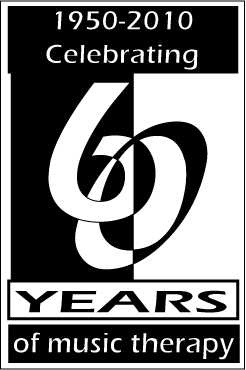 The Early Days
The Early Days
During the early years of the twentieth century, physicians, musicians, and psychiatrists noted that music might be an effective treatment aid in a variety of settings. Musicians sometimes served as unpaid part-time staff members who worked under the supervision of hospital personnel. However, there was an increased demand for trained hospital musicians, particularly in VA hospitals and state facilities, in response to the need to treat WWII veterans.
By the mid-1940s, music therapy curricula had been established at Michigan State College (1944), the University of Kansas (1946), the College of the Pacific (1947), The Chicago Musical College (1948) and Alverno College (1948). Furthermore, several music organizations demonstrated increasing interest in using music as a form of therapy.
Howard Hanson, Director of the Eastman School of Music was President of the National Music Council (NMC) in 1945. The NMC formed The Committee on the Use of Music in Hospitals. Early leaders of this committee were Dr. Samuel W. Hamilton, President of the American Psychiatric Association and Ray Green, Chief of Music, Recreation Service, and Special Services of the Veterans Administration.
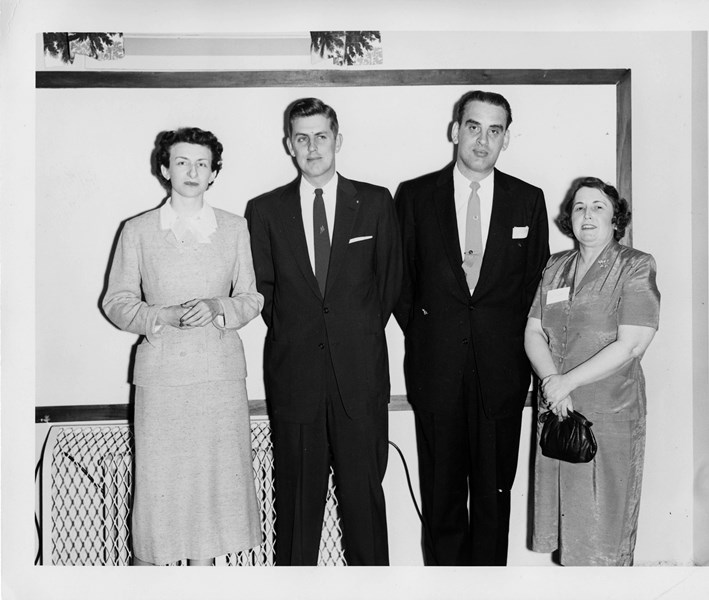 The Music Teachers National Association (MTNA) presented programs during the late 1940’s to educate musicians, physicians, psychiatrists, and others in the ways that therapeutic music could be effectively used in schools and hospitals. The National Association of Schools of Music sponsored sessions at MTNA conferences on music therapy. Roy Underwood and E. Thayer Gaston (who also chaired The Music Educators National Conference’s Special Committee on Functional Music) were presenters. At the 1949 MTNA meeting, Ray Green was asked to preside at a meeting to discuss forming a national organization for music therapy.
The Music Teachers National Association (MTNA) presented programs during the late 1940’s to educate musicians, physicians, psychiatrists, and others in the ways that therapeutic music could be effectively used in schools and hospitals. The National Association of Schools of Music sponsored sessions at MTNA conferences on music therapy. Roy Underwood and E. Thayer Gaston (who also chaired The Music Educators National Conference’s Special Committee on Functional Music) were presenters. At the 1949 MTNA meeting, Ray Green was asked to preside at a meeting to discuss forming a national organization for music therapy.
Regional music therapy conferences began during the 1940s. There was substantial interest in forming a new association — and it almost happened at the 1949 KU regional conference.
1950s
The year -- 1950. Sam Phillips launched Sun Records in Memphis, Tennessee; 16,000 electric organs were sold this year, but the accordion was the rage (often it was sold door-to-door); Benny Goodman performed at Carnegie Hall; Rudolph the Red Nosed Reindeer by Gene Autry topped the record charts; Carousel by Rogers and Hammerstein wowed Broadway audiences and the California State Personnel Board posted an announcement about an examination for state positions for music therapists. The salary was listed as $268-325 per month!
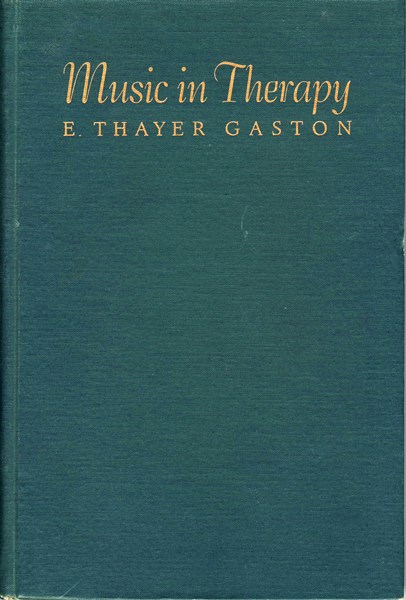 The preliminary meeting was held from February 28th to March 2nd, 1950 in Cleveland, Ohio. The actual organizational meeting convened on June 2, 1950 in New York City. Delegates elected Ray Green Chairman of the Committee on Organization, and then the first President of the National Association for Music Therapy (NAMT). Other members elected to office were: Roy Underwood, first Vice President; Myrtle Fish Thompson, Secretary; and Frieda Dierks, Treasurer. Arthur Flagler Fultz became the first chair of the Research Committee, the only standing committee named in the original constitution adopted that day. The first annual conference, held in conjunction with MTNA, took place in Washington D.C., during December of 1950. Membership was reported to be 85.
The preliminary meeting was held from February 28th to March 2nd, 1950 in Cleveland, Ohio. The actual organizational meeting convened on June 2, 1950 in New York City. Delegates elected Ray Green Chairman of the Committee on Organization, and then the first President of the National Association for Music Therapy (NAMT). Other members elected to office were: Roy Underwood, first Vice President; Myrtle Fish Thompson, Secretary; and Frieda Dierks, Treasurer. Arthur Flagler Fultz became the first chair of the Research Committee, the only standing committee named in the original constitution adopted that day. The first annual conference, held in conjunction with MTNA, took place in Washington D.C., during December of 1950. Membership was reported to be 85.
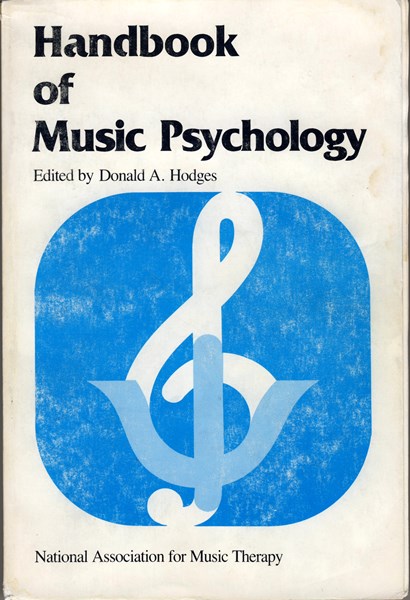 Perhaps the most important action taken by NAMT during its early years was the establishment of the registered music therapist (RMT) designation. Established in 1956 with the National Association for Schools of Music (NASM) which served as the accrediting agency, the RMT designation provided assurance to employers that the therapist had met educational and clinical standards set by NAMT. Music therapists worked primarily with persons with mental illness residing in large state-supported institutions. As the number of RMTs increased, so did the types of populations served.
Perhaps the most important action taken by NAMT during its early years was the establishment of the registered music therapist (RMT) designation. Established in 1956 with the National Association for Schools of Music (NASM) which served as the accrediting agency, the RMT designation provided assurance to employers that the therapist had met educational and clinical standards set by NAMT. Music therapists worked primarily with persons with mental illness residing in large state-supported institutions. As the number of RMTs increased, so did the types of populations served.
In an arrangement with NASM, education programs were formulated to better educate the music therapy student; later, NASM agreed to accredit NAMT Music Therapy Degree Programs. The development of clinical training for music therapy interns was an important step that made music therapy a more respected career. Dr. E. Thayer Gaston helped establish the first clinical intern site in Topeka, Kansas at the Menninger Clinic. Another site followed at a hospital in Stockton, California thanks to the efforts of Wilhelmina Harbert. Also in this decade, the Improvisational Model found its wings as Clive Robbins and Paul Nordoff began their pioneering collaborative work in1959.
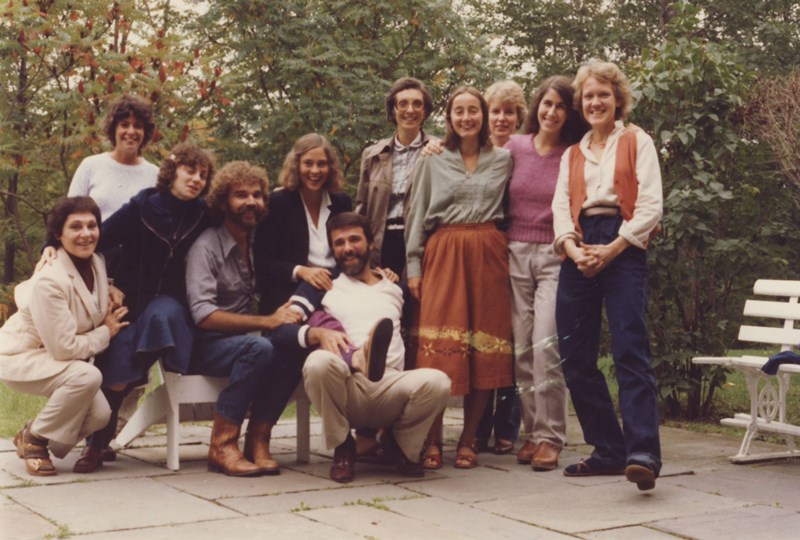 “There are feelings of deep satisfaction over the gains that have been made, for NAMT has passed through a formative stage of growth and has reached a level of stability that speaks well for the future. The American Medical Association invited NAMT to send a representative to meet with the AMA Joint Committee to Study Paramedical Areas in Relation to Medicine….Dr. E. Thayer Gaston represented NAMT at this important convocation…” (Dorothy Brin Crocker, NAMT President, September, 1959.)
“There are feelings of deep satisfaction over the gains that have been made, for NAMT has passed through a formative stage of growth and has reached a level of stability that speaks well for the future. The American Medical Association invited NAMT to send a representative to meet with the AMA Joint Committee to Study Paramedical Areas in Relation to Medicine….Dr. E. Thayer Gaston represented NAMT at this important convocation…” (Dorothy Brin Crocker, NAMT President, September, 1959.)
1960s
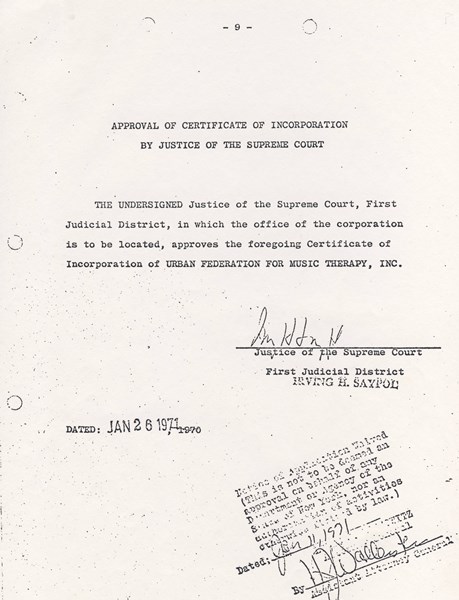 Chubby Checker’s The Twist ushers in the decade, Elvis remains a pop fixture, Ray Charles croons Georgia on My Mind, and serious concertgoers ponder the different styles of Walter Piston’s and Dmitri Shostakovich’s latest compositions. However, The Times They Are a-Changin’…The title track of Bob Dylan’s 1964 studio album captured the spirit of social and political upheaval that characterized the 1960s. Music therapists’ work opportunities had expanded to include places that served clients with developmental and/or physical disabilities as well as sensory impairments. Helen Bonny ‘s work resulted in the development of The Bonny Method of Guided Imagery and Music (GIM). More college and university music therapy programs had been established, and music therapists found themselves in a profession that was a good fit for these changing times.
Chubby Checker’s The Twist ushers in the decade, Elvis remains a pop fixture, Ray Charles croons Georgia on My Mind, and serious concertgoers ponder the different styles of Walter Piston’s and Dmitri Shostakovich’s latest compositions. However, The Times They Are a-Changin’…The title track of Bob Dylan’s 1964 studio album captured the spirit of social and political upheaval that characterized the 1960s. Music therapists’ work opportunities had expanded to include places that served clients with developmental and/or physical disabilities as well as sensory impairments. Helen Bonny ‘s work resulted in the development of The Bonny Method of Guided Imagery and Music (GIM). More college and university music therapy programs had been established, and music therapists found themselves in a profession that was a good fit for these changing times.
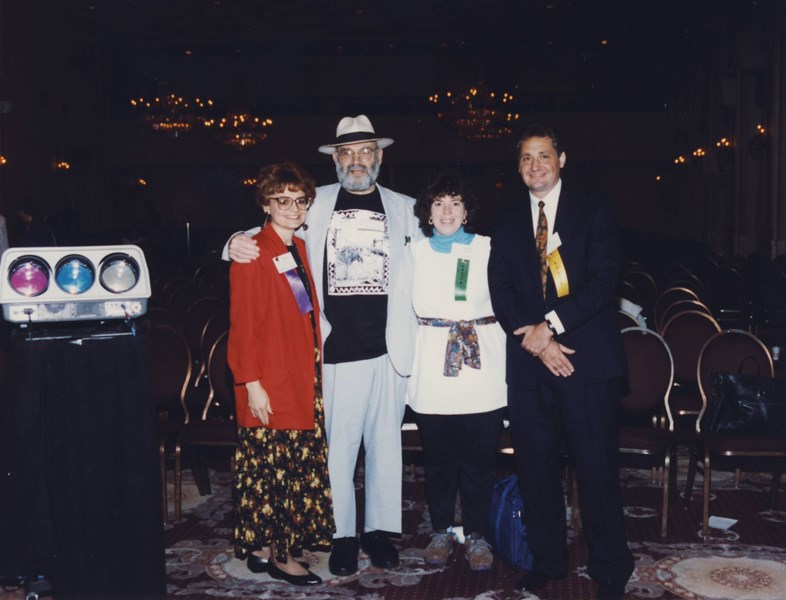 Yet, at the beginning of its second official decade, the music therapy profession was finding some stability. In 1961, the NAMT National Office was established in Lawrence, Kansas, and in 1964, a major milestone of the profession was achieved with the publication of the first issue of the Journal of Music Therapy.
Yet, at the beginning of its second official decade, the music therapy profession was finding some stability. In 1961, the NAMT National Office was established in Lawrence, Kansas, and in 1964, a major milestone of the profession was achieved with the publication of the first issue of the Journal of Music Therapy.
1970s
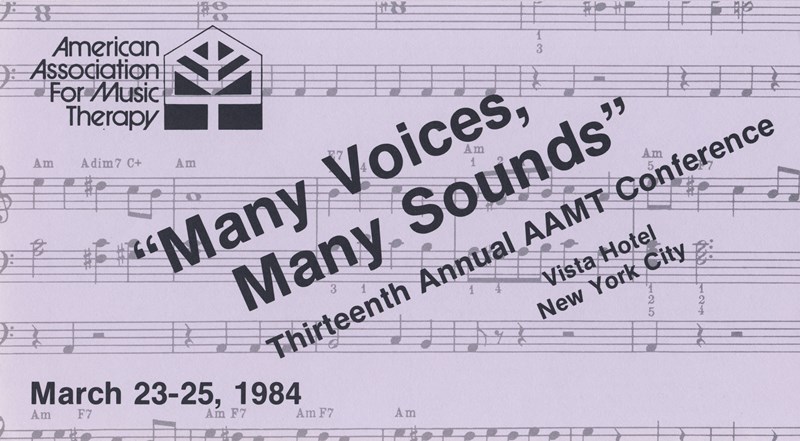 Music therapists, too, were exploring options to represent their various needs. In 1971, the Urban Federation for Music Therapists (UFMT) was founded with its office at New York University. Robert Cumming served as its first president and NYU became its first university to be granted NASM accreditation for its music therapy degree program. In 1972, the Certification Program (CMT) was initiated and in 1975, the UFMT became the American Association for Music Therapy (AAMT). Soon after, NASM agreed to accredit AAMT Music Therapy degree programs at Temple, Hahnemann, Emmanuel and Immaculata. Hahnemann University’s music therapy program was the first program to be accredited by AAMT and NAMT. Others quickly followed.
Music therapists, too, were exploring options to represent their various needs. In 1971, the Urban Federation for Music Therapists (UFMT) was founded with its office at New York University. Robert Cumming served as its first president and NYU became its first university to be granted NASM accreditation for its music therapy degree program. In 1972, the Certification Program (CMT) was initiated and in 1975, the UFMT became the American Association for Music Therapy (AAMT). Soon after, NASM agreed to accredit AAMT Music Therapy degree programs at Temple, Hahnemann, Emmanuel and Immaculata. Hahnemann University’s music therapy program was the first program to be accredited by AAMT and NAMT. Others quickly followed.
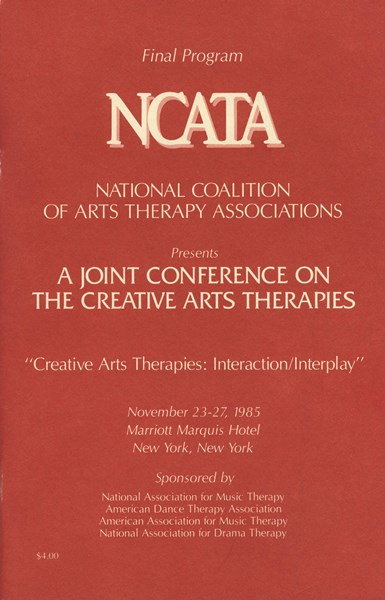 In
In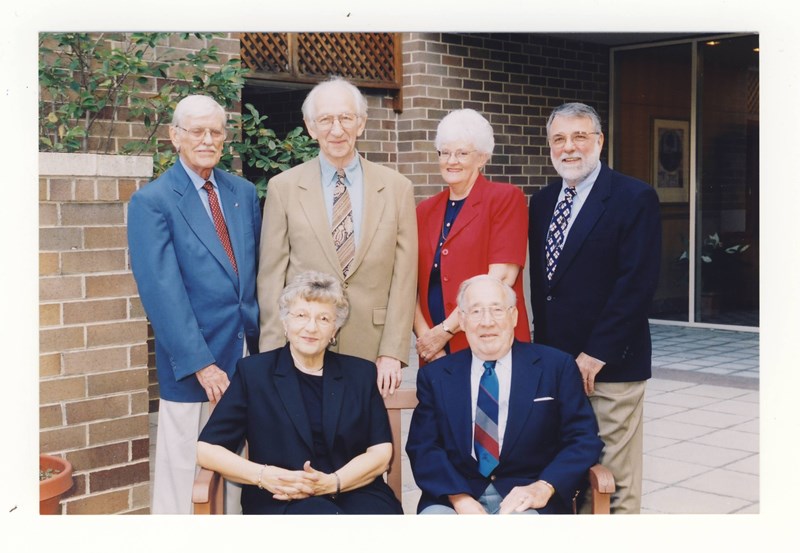 the ‘70s, music therapy clients also now included elderly people in nursing homes, individuals in rehabilitation settings, patients with medical conditions, and prisoners. The education setting was seeing far-reaching changes with the passage of P.L. 94-142, the Education for All Handicapped Children Act. In addition, Mary Priestly developed her theories of Analytic Music Therapy, a major model that helped define music therapy practice. The future AMTAS has its beginnings in this decade as music therapy students began to meet at conferences and communicate throughout the academic year.
the ‘70s, music therapy clients also now included elderly people in nursing homes, individuals in rehabilitation settings, patients with medical conditions, and prisoners. The education setting was seeing far-reaching changes with the passage of P.L. 94-142, the Education for All Handicapped Children Act. In addition, Mary Priestly developed her theories of Analytic Music Therapy, a major model that helped define music therapy practice. The future AMTAS has its beginnings in this decade as music therapy students began to meet at conferences and communicate throughout the academic year.
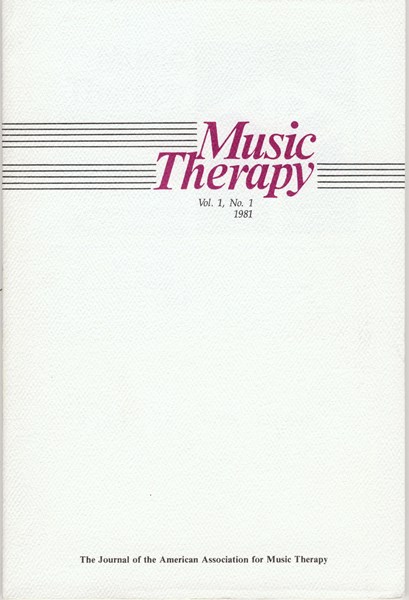 It was the era ruled by the Vietnam War. The Jackson 5, Elton John, Led Zeppelin and Jimmy Buffet were bursting into the music scene. The Beatles released their final album together, and Johnny Cash performed at the White House at the invitation of President Richard M. Nixon. Jimi Hendrix and Janis Joplin died untimely deaths. It was a time of protests, questioning and pain.
It was the era ruled by the Vietnam War. The Jackson 5, Elton John, Led Zeppelin and Jimmy Buffet were bursting into the music scene. The Beatles released their final album together, and Johnny Cash performed at the White House at the invitation of President Richard M. Nixon. Jimi Hendrix and Janis Joplin died untimely deaths. It was a time of protests, questioning and pain.
1980s
The award for Best Disco Recording was first given out at the 1980 Grammy Awards; however, this was the only year it was ever presented!
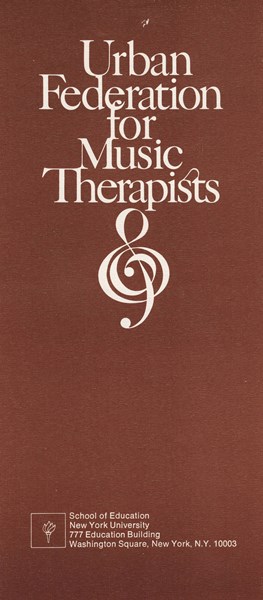
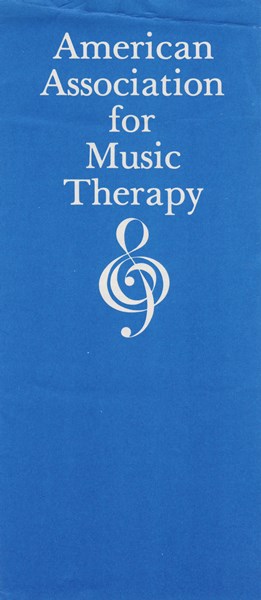 Read all about it…information about music therapy explodes! In 1981, AAMT’s journal Music Therapy was first published, closely followed by NAMT’s Music Therapy Perspectives in 1982 and the International Newsletter of Music Therapy in 1983. Edited by Wanda Lathom and Charles Eagle, the first Monograph Series was published in 1984, made possible by a grant funded through the Office of Special Education. In 1985, the First National Coalition of Arts Therapies Associations (NCATA) Joint Conference was held in New York City.
Read all about it…information about music therapy explodes! In 1981, AAMT’s journal Music Therapy was first published, closely followed by NAMT’s Music Therapy Perspectives in 1982 and the International Newsletter of Music Therapy in 1983. Edited by Wanda Lathom and Charles Eagle, the first Monograph Series was published in 1984, made possible by a grant funded through the Office of Special Education. In 1985, the First National Coalition of Arts Therapies Associations (NCATA) Joint Conference was held in New York City.
The NAMT National Office moved to Washington, DC in 1982. Later in the decade, current Executive Director Andrea Farbman was hired.
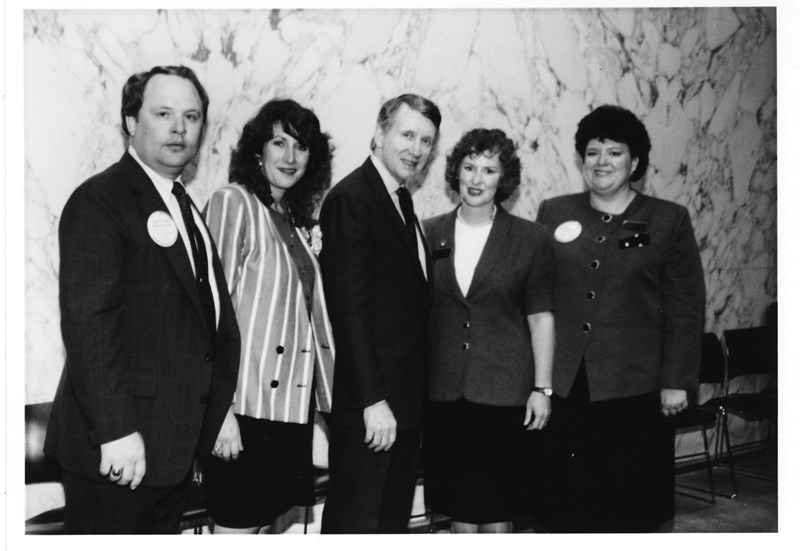 Kenneth Bruscia, Barbara Hesser, and Edith Hillman Boxill wrote the Essential Competencies for the Practice of Music Therapy. The Certification Board for Music Therapy was founded in 1983 and the MT-BC Program was initiated. The first National Music Therapy Board Certification Examination was administered in 1985. In 1989, AAMT established the first advanced professional designation: the Advanced Certification in Music Therapy (ACMT.)
Kenneth Bruscia, Barbara Hesser, and Edith Hillman Boxill wrote the Essential Competencies for the Practice of Music Therapy. The Certification Board for Music Therapy was founded in 1983 and the MT-BC Program was initiated. The first National Music Therapy Board Certification Examination was administered in 1985. In 1989, AAMT established the first advanced professional designation: the Advanced Certification in Music Therapy (ACMT.)
“A Historical Study of the National Association for Music Therapy”, includes the program of the first NAMT conference. Dr. Samuel Hamilton, then Past-President of the American Psychiatric Association presented “Music in Mental Hospitals.” There were two presentations on music in combination with Electro-Shock Therapy, music in the Veterans Administration, and one on the Red Cross. Certainly ahead of its time was “Music Therapy during Labor and Delivery in the Johns Hopkins and Sinai Hospital Obstetrical Anesthesia Research.” (Dissertation by Ruth Boxberger)
1990s
“In the early 1990s, Marilyn Sandness sent me a message letting me know that she had recently been in touch with Arthur Flagler Fultz. Rev. Fultz was not only the 5th president of NAMT, but was RMT number 004! I called him and arranged to visit him at his counseling clinic in Woburn, Massachusetts. It was the first time I met and interviewed an association pioneer who actually attended the planning meeting that resulted in the founding of NAMT. What followed was a friendship with a remarkable man that culminated with his speaking at the opening session of the 1995 national conference in Houston.” (Alan Solomon)
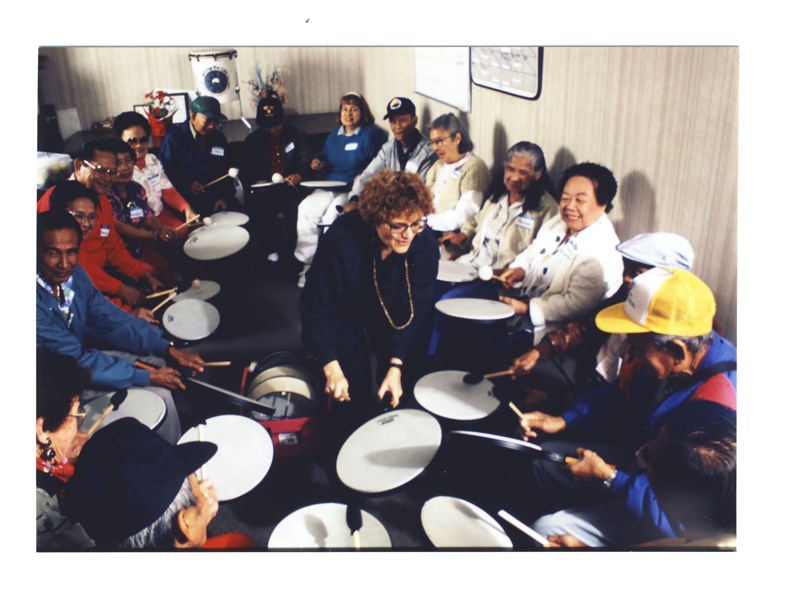 The road to unification begins. In 1990, an AAMT/NAMT task force was appointed; however, the timing was not yet right to merge. The 1991 U.S. Special Committee on Aging hearing, Forever Young: Music and Aging, gave AAMT and NAMT leaders another opportunity to collaborate. Following the 1993 Joint North American Music Therapy Conference in Toronto, Ontario, Canada, Norman Goldberg, President of MMB Music urged the formation of one national music therapy organization. He, Karl Bruhn, and leaders of AAMT and NAMT Ken Aigen, Bryan Hunter, Gary Hara, and Barbara Reuer met in Philadelphia and drew up the first unification proposal.
The road to unification begins. In 1990, an AAMT/NAMT task force was appointed; however, the timing was not yet right to merge. The 1991 U.S. Special Committee on Aging hearing, Forever Young: Music and Aging, gave AAMT and NAMT leaders another opportunity to collaborate. Following the 1993 Joint North American Music Therapy Conference in Toronto, Ontario, Canada, Norman Goldberg, President of MMB Music urged the formation of one national music therapy organization. He, Karl Bruhn, and leaders of AAMT and NAMT Ken Aigen, Bryan Hunter, Gary Hara, and Barbara Reuer met in Philadelphia and drew up the first unification proposal.
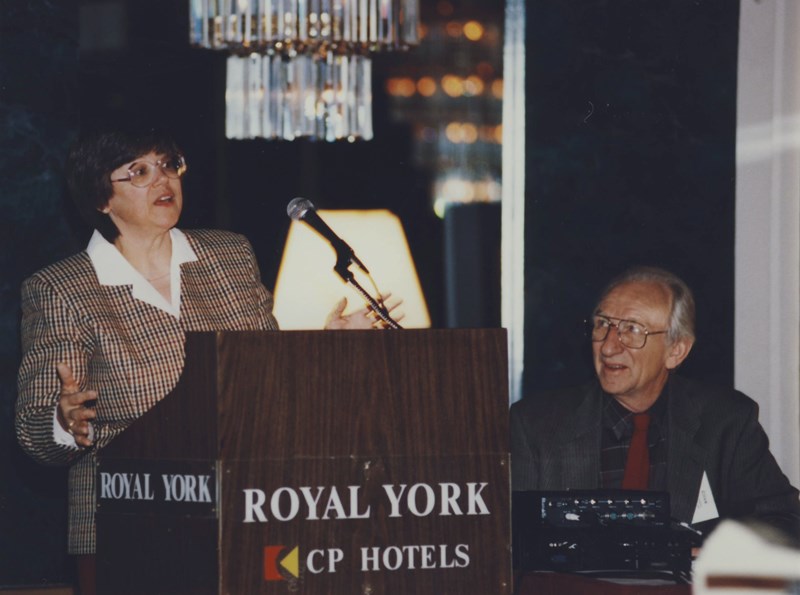
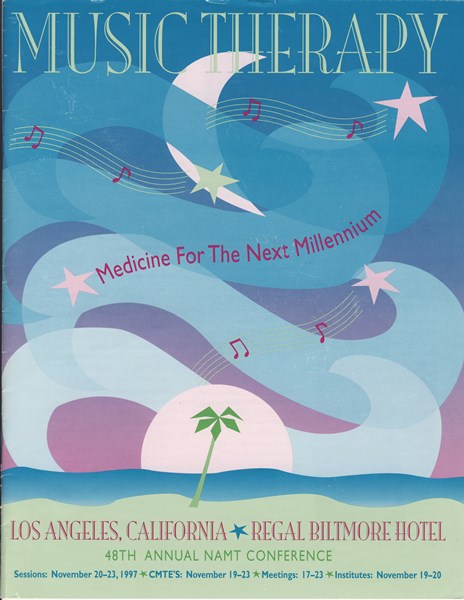 In 1996, a Joint AAMT/NAMT Conference was held in Nashville, TN and the memberships voted to unify. Throughout 1996–97, AMTA’s first President, David Smith, led the unification team through a seamless transition time and the Education and Clinical Training Commission and the Publications Task Force began their work. The American Music Therapy Association was founded in 1998 and the first AMTA conference was held in Cleveland, OH. Attendees celebrated at the Rock and Roll Hall of Fame.
In 1996, a Joint AAMT/NAMT Conference was held in Nashville, TN and the memberships voted to unify. Throughout 1996–97, AMTA’s first President, David Smith, led the unification team through a seamless transition time and the Education and Clinical Training Commission and the Publications Task Force began their work. The American Music Therapy Association was founded in 1998 and the first AMTA conference was held in Cleveland, OH. Attendees celebrated at the Rock and Roll Hall of Fame.
Earlier in this decade, NAMT degree programs adopted the Music Therapy Professional Competencies, thus standardizing the undergraduate curriculum. In 1999, the Commission on Education and Clinical Training submitted their final report and recommendations for embracing educational and clinical training models from AAMT and NAMT, leading to the new Standards for Education and Clinical Training for all AMTA music therapy degree programs.
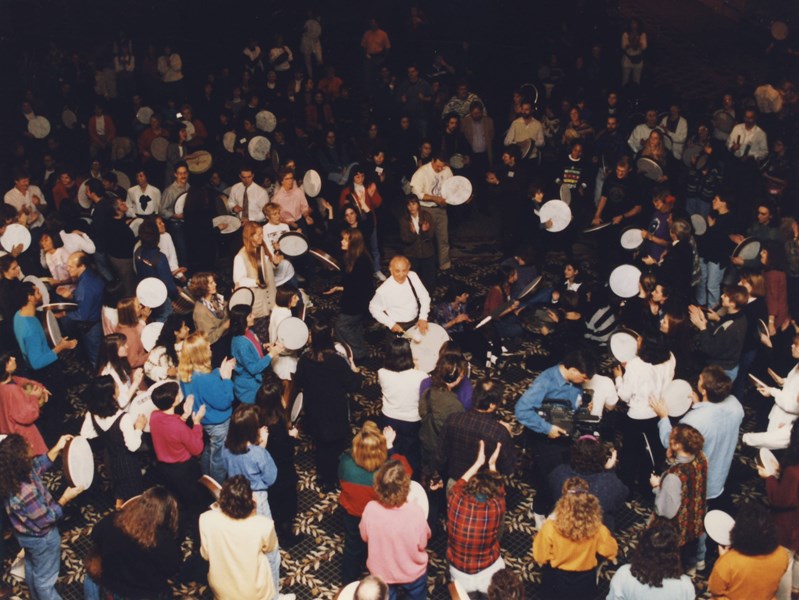
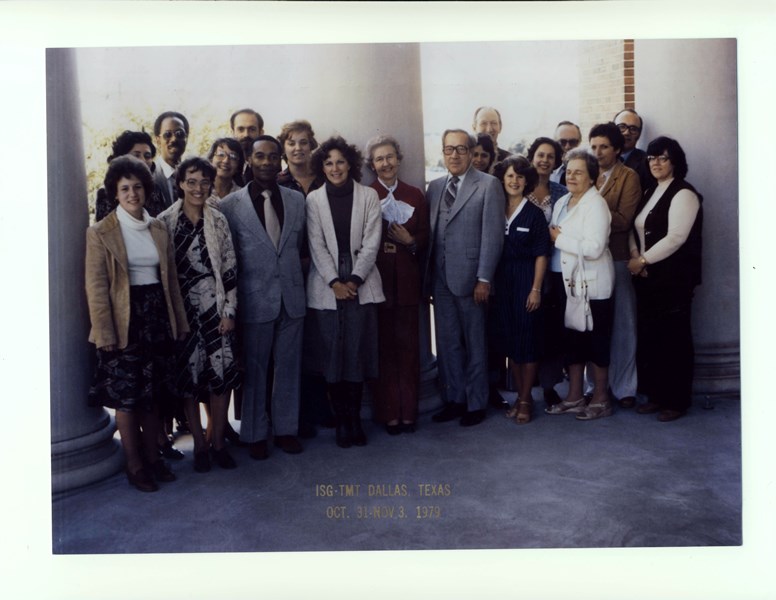 Other notable accomplishments of this decade include the production of the 1996 documentary “Music Therapy and Medicine: Partnerships in Care,” the 1999 “Music Therapy & Medicine, A National Satellite Broadcast,” the endowment by the Ott family of the “Arthur Flagler Fultz Research Fund” and the hosting of the 1999 Ninth World Congress of Music Therapy in Washington, D.C.
Other notable accomplishments of this decade include the production of the 1996 documentary “Music Therapy and Medicine: Partnerships in Care,” the 1999 “Music Therapy & Medicine, A National Satellite Broadcast,” the endowment by the Ott family of the “Arthur Flagler Fultz Research Fund” and the hosting of the 1999 Ninth World Congress of Music Therapy in Washington, D.C.
2000— 2010
AMTA and the St. Louis Symphony Orchestra commissioned Lalo Schifrin’s Jazz and Blues Variations, A Symphonic Celebration which was premiered by the St. Louis Symphony Orchestra at the 50th Anniversary national conference in St. Louis. George N. Heller of the University of Kansas presented the tenth William W. Sears Distinguished Lecturer address on this momentous occasion.

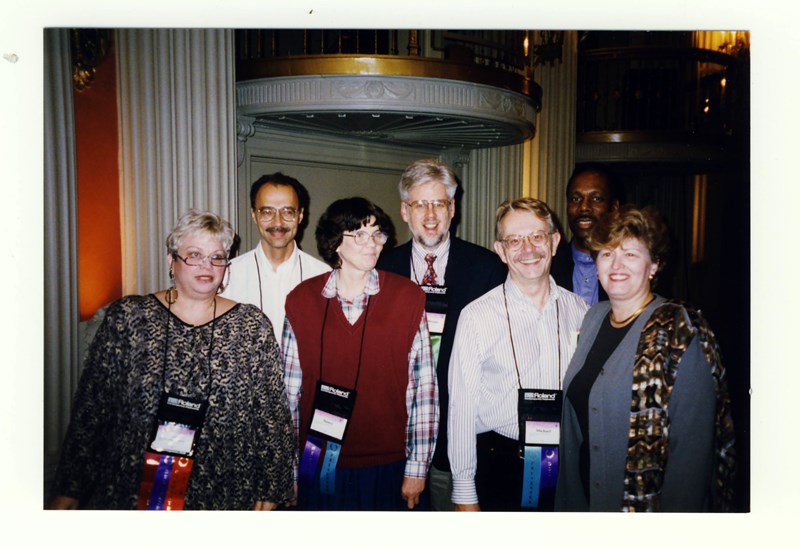 The new millennium afforded great growth for the music therapy profession. Intellectual property donations become ever-increasing, and AMTA expanded its publication efforts, resulting in new resources that yielded broader respect and revenue for the association. Government Relations and Advocacy became focuses of the association at the state and national levels. The Art and Music Therapy Hill Day Conference, Washington, D.C. provided unique training for members.
The new millennium afforded great growth for the music therapy profession. Intellectual property donations become ever-increasing, and AMTA expanded its publication efforts, resulting in new resources that yielded broader respect and revenue for the association. Government Relations and Advocacy became focuses of the association at the state and national levels. The Art and Music Therapy Hill Day Conference, Washington, D.C. provided unique training for members.
In 2001, the New York City Music Therapy Relief Project was initiated in response to 9/11. Further relief efforts and projects followed with the 2005 Gulf Coast Hurricane Relief Initiative, the 2007 Music Therapy Military Family Grant, the 2009 collaboration with To the Fallen Records and their foundation, and the continuation of the Returning Soldiers Grant.
The map of AMTA changed slightly in 2004 as the Southeastern and South Central regions united. In 2006, the AMTA Research Priority was launched. 2008 sees the 10th anniversary of AMTA celebrated at yet another St. Louis conference.
 As this decade came to a close, the association did not rest on its laurels, but moved with increasing speed in several directions, bringing recognition to the profession and benefits to members and those with whom they worked. In 2008, AMTA took part in an historic meeting with practitioners working as therapeutic bedside musicians. The 2008 Business Institute became the first free institute to be offered to conference participants, and the Fultz Fund 10th Anniversary CD-ROM was given to conference participants and/or donors.
As this decade came to a close, the association did not rest on its laurels, but moved with increasing speed in several directions, bringing recognition to the profession and benefits to members and those with whom they worked. In 2008, AMTA took part in an historic meeting with practitioners working as therapeutic bedside musicians. The 2008 Business Institute became the first free institute to be offered to conference participants, and the Fultz Fund 10th Anniversary CD-ROM was given to conference participants and/or donors.
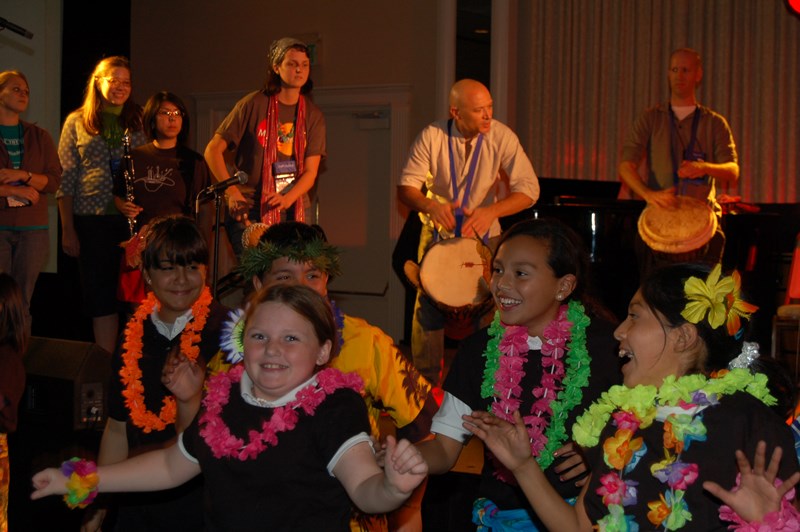 The AMTA.Pro interactive podcast series on clinical practice was launched in 2009 as was J.O.I.N M.T. At the 2009 San Diego conference, the Neurosciences Institute was held with Drs. Ani Patel and John Iversen. Dr. Patel’s Sears lecture was highly lauded. Chuck Wild collaborated with Alicia Clair to provide custom music for music therapy applications (Recorded Music for Therapeutic Applications) on the members-only website. The Reimbursement, Research and Autism Strategic Priorities became major focus areas for the association.
The AMTA.Pro interactive podcast series on clinical practice was launched in 2009 as was J.O.I.N M.T. At the 2009 San Diego conference, the Neurosciences Institute was held with Drs. Ani Patel and John Iversen. Dr. Patel’s Sears lecture was highly lauded. Chuck Wild collaborated with Alicia Clair to provide custom music for music therapy applications (Recorded Music for Therapeutic Applications) on the members-only website. The Reimbursement, Research and Autism Strategic Priorities became major focus areas for the association.
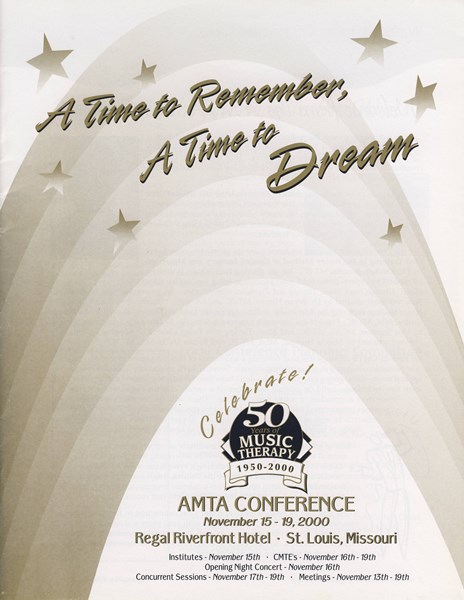 AMTA moved into a new era in 2010 with the publication of its first online magazine, imagine, dedicated to early childhood music therapy. The Library of Congress featured Music Therapy with presentations by Connie Tomaino, Jayne Standley, Anne Parker, Alicia Clair, and Deforia Lane. The United Nations cited AMTA’s Disaster Relief Work and expanded the Music Compendium. AMTA proudly established a partnership with the Nathaniel Anthony Ayers Foundation. Music therapy clinicians were a part of the Children’s Mental Health Awareness Day sponsored by SAMHSA (Substance Abuse and Mental Health Services Administration). Maureen McGovern, AMTA artist-spokesperson closed her foundation and gave proceeds to AMTA. Another AMTA Spokesperson Robin Spielberg and Larry Kosson sealed a Performing Arts Management Merger that has publicity ramifications for AMTA.
AMTA moved into a new era in 2010 with the publication of its first online magazine, imagine, dedicated to early childhood music therapy. The Library of Congress featured Music Therapy with presentations by Connie Tomaino, Jayne Standley, Anne Parker, Alicia Clair, and Deforia Lane. The United Nations cited AMTA’s Disaster Relief Work and expanded the Music Compendium. AMTA proudly established a partnership with the Nathaniel Anthony Ayers Foundation. Music therapy clinicians were a part of the Children’s Mental Health Awareness Day sponsored by SAMHSA (Substance Abuse and Mental Health Services Administration). Maureen McGovern, AMTA artist-spokesperson closed her foundation and gave proceeds to AMTA. Another AMTA Spokesperson Robin Spielberg and Larry Kosson sealed a Performing Arts Management Merger that has publicity ramifications for AMTA.
….and we celebrate 60 Years of Music Therapy in Cleveland, Ohio with a time to remember being uniquely presented at the Carol Hampton Bitcon Inaugural Lecture by Alan Solomon and Ken Medema.
“I have been a practicing music therapist for 42 years. It has been one most wonderful ride. I tell perspective students and others that talking about clinical work still gives me goose bumps! I am so delighted to have had the career that I have had and I would do it all over again without hesitation. I have one regret: I will not have the opportunity to work another 40 years to see how things move forward. Music therapy is indeed a very exciting and fulfilling career!” (Alicia Clair)
The Years Ahead
On the horizon for AMTA is the rebuilding of the AMTA website, further work on the Research, Reimbursement and Autism Priorities and ongoing collaboration with CBMT on the state recognition operational plan. Important topics for consideration include online courses and levels of practice. Scholarships and the Fultz Fund are increasing; publishing is expanding and partnerships such as those within the music therapy and neuroscience communities are growing stronger. Recognition of music therapy by public and government agencies highlights the progression of the profession. Our approaches, models and philosophies have evolved; our music binds us together, and our careers will lead us into unimagined territory. The past is to be honored, but the future is to be shaped. How will you be a part of the next chapter of our story?
Sincere thanks to Cynthia Briggs, Alicia Clair, Jane Creagan, William Davis, Barbara Else, Andrea Farbman, Marcia Humpal, Bryan Hunter, Alan Solomon and Judy Simpson for sharing their knowledge, historical resources, perspectives and reflections.
8455 Colesville Road, Suite 1000 | Silver Spring MD 20910 | Phone: 301.589.3300 | Fax: 301.589.5175